Skeptical Inquirer is a bimonthly American general-audience magazine published by the Committee for Skeptical Inquiry (CSI) with the subtitle: The Magazine for Science and Reason.

ArtCenter College of Design is a private art university in Pasadena, California.
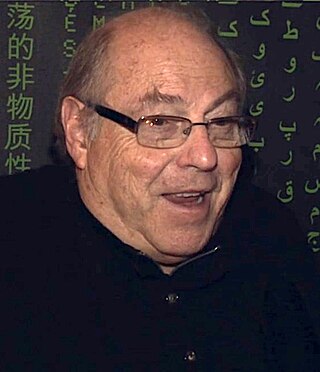
Roy Ascott FRSA is a British artist, who works with cybernetics and telematics on an art he calls technoetics by focusing on the impact of digital and telecommunications networks on consciousness. Since the 1960s, Ascott has been a practitioner of interactive computer art, electronic art, cybernetic art and telematic art.

Mel Alexenberg is an American-Israeli artist, art educator, and writer recognized for his pioneering work exploring the intersections of art, science, technology and digital culture. He experimental with digital fine art prints in the 1980s that are in 30 museum collections worldwide, circumglobal cyberangel flights honoring Rembrandt in 1989 and in 2019.

Edward A. Shanken is an American art historian, whose work focuses on the entwinement of art, science and technology, with a focus on experimental new media art and visual culture. Shanken is Professor, Arts Division, at UC Santa Cruz. His scholarship has appeared in numerous journals and anthologies and has been translated into many languages. Shanken is the author of Art and Electronic Media, among other titles.
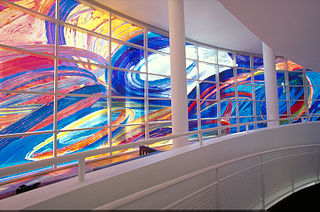
Deanna Sirlin is an American contemporary artist best known for her large-scale installations and paintings. Sirlin's art has been shown all over the world and includes massive installations that dominate entire buildings in Venice, Italy, Atlanta, Georgia, London, England, Antalya, Turkey, New Orleans, Louisiana and Evora,Portugal.
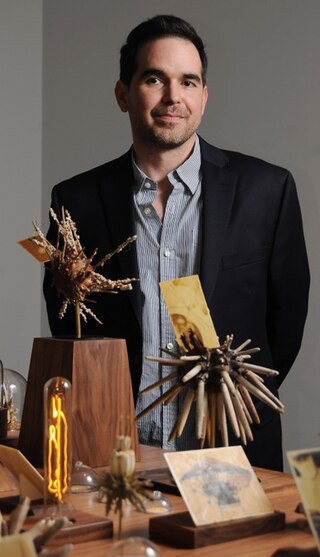
Dario Robleto is an American transdisciplinary artist, researcher, writer, and teacher. His research-driven practice results in intricately handcrafted objects that reflect his exploration of music, popular culture, science, war, and American history.
Adrianne Wortzel is an American contemporary artist who utilizes robotics in her installations and performances. She has also created many online works.

Victoria Vesna is a professor and digital media artist. She is known for her feminist video, computer and internet art and has been active since the early 1980s. Along with collaborator Jim Gimzewski she is thought to have created one of the first interactive artworks related to nanotechnology and defines her art practice as experimental research.
Cynthia Carlson is an American visual artist, living and working in New York.

Ernest Edmonds is a British artist, a pioneer in the field of computer art and its variants, algorithmic art, generative art, interactive art, from the late 1960s to the present. His work is represented in the Victoria and Albert Museum, as part of the National Archive of Computer-Based Art and Design.
Sha Xin Wei is a media philosopher and professor at the School of Arts, Media + Engineering in the Herberger Institute for Design and the Arts + Ira A. Fulton Schools of Engineering at Arizona State University. He has created ateliers such as the Synthesis Center at Arizona State University, the Topological Media Lab at Concordia University, and Weightless Studio in Montreal for experiential experiments and experimental experience.
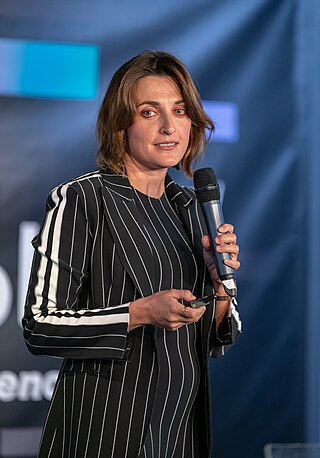
Pinar Yoldas is a Turkish-American architect, artist and professor at University of California San Diego. She is known for art and architecture that focus on the anthropocene, futurism, and feminist technoscience.

Anna Frants is a Russian-American multimedia artist, curator, and art collector. She is the founder of nonprofit cultural foundation "Cyland Foundation Inc." and "CYLAND" MediaArtLab, and is director of "Frants Gallery".
Leonardo, The International Society for the Arts, Sciences and Technology (Leonardo/ISAST) is a registered 501(c)(3) nonprofit formed in 1982 as an umbrella organization for the journals Leonardo and the Leonardo Music Journal. In 2018, Leonardo/ISAST was awarded the Golden Nica Prix Ars Electronica as Visionary Pioneers of New Media Art.

Ellen K. Levy is an American multimedia artist and scholar known for exploring art, science and technology interrelationships since the early 1980s. Levy works to highlight their importance through exhibitions, educational programs, publications and curatorial opportunities; often through collaborations with scientists including NASA, some in conjunction with Leonardo, the International Society for the Arts, Sciences and Technology. She is a past president of the College Art Association and has published widely on art and complex systems.
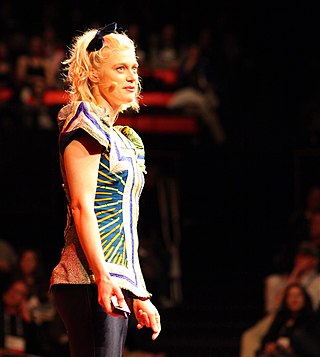
Lucy McRae is a British-born Australian science fiction artist, body architect, film maker and TED fellow. Her installations include film, photography, sculptures, and edible and wearable technology.
Pat Badani is a Canadian-American interdisciplinary artist, writer/editor, and researcher whose works promote ecological balance and sustainable human-world relations. She is best known for utopian/dystopian themes in works dealing with human migration, globalization, connections between food and cultures, and sustainability. Art projects often include culinary art, photography, installation, digital art, internet art, mobile apps, and creative writing. Articles about her work have appeared in art magazines, in journals (Leonardo), and in book chapters. She is a board member of the International Symposium on Electronic Art since 2017, and former editor-in-chief of Media-N, Journal of the New Media Caucus (2010-2016), an academic art journal published in the U.S.A.
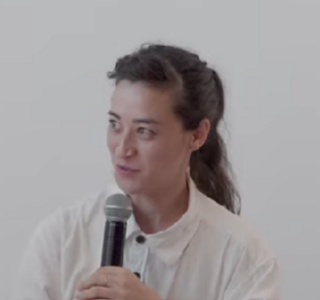
Gala Porras-Kim is a Colombian-Korean-American contemporary interdisciplinary artist who lives and works in Los Angeles and London. Her work deals with the fields of linguistics, history, and conservation, often engaging in institutional critique.

The Elmer Belt Library of Vinciana is a special collection at the University of California, Los Angeles which focuses on Leonardo da Vinci – life, art, thought, and enduring cultural influence. It is the most extensive research collection concerning Leonardo in the United States. It was donated to UCLA in several installments between 1961 and 1966 by Dr. Elmer Belt (1893-1980), an internationally recognized urologist; a pioneer in gender-affirming surgery; a strong supporter in the founding of the UCLA School of Medicine; an important public health advocate; and a lifelong bibliophile and book collector.














